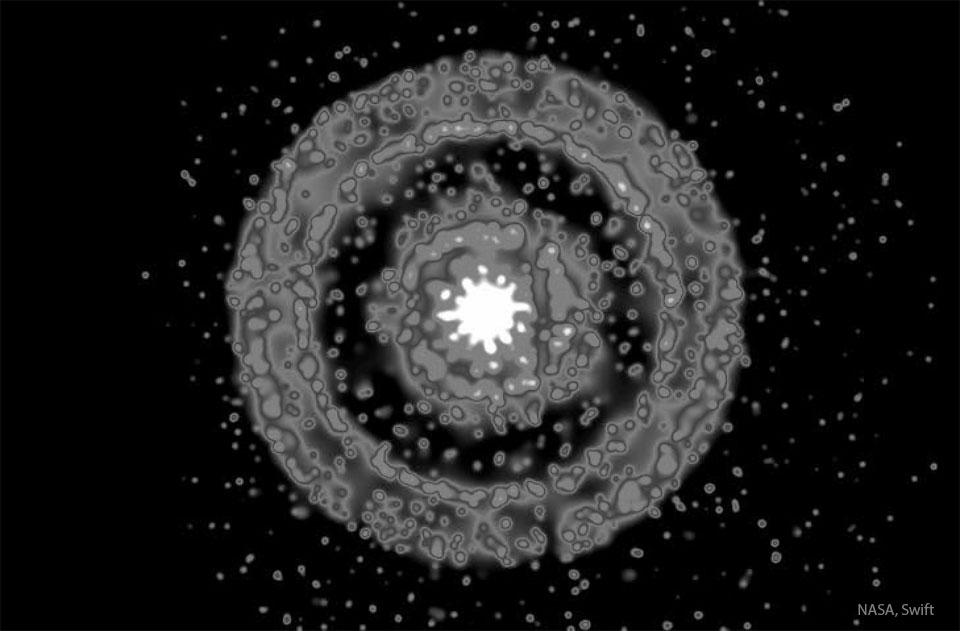Astronomy Picture of the Day
Discover the cosmos! Each day a different image or photograph of our fascinating universe is featured, along with a brief explanation written by a professional astronomer.
Image Credit: NASA Swift Obs.; Data: B. Cenko (NASA's GSFC), A. Beardmore (U. Leicester) et al.; Processing: J. Miller (U. Michigan)
Explanation: Why would x-ray rings appear around a gamma-ray burst? The surprising answer has little to do with the explosion itself but rather with light reflected off areas of dust-laden gas in our own Milky Way Galaxy. GRB 221009A was a tremendous explosion -- a very bright gamma-ray burst (GRB) that occurred far across the universe with radiation just arriving in our Solar System last week. Since GRBs can also emit copious amounts of x-rays, a bright flash of x-rays arrived nearly simultaneously with the gamma-radiation. In this case, the X-rays also bounced off regions high in dust right here in our Milky Way Galaxy, creating the unusual reflections. The greater the angle between reflecting Milky Way dust and the GRB, the greater the radius of the X-ray rings, and, typically, the longer it takes for these light-echoes to arrive.
Authors & editors: Robert Nemiroff (MTU) & Jerry Bonnell (UMCP)
NASA Official: Phillip Newman Specific rights apply.
NASA Web Privacy Policy and Important Notices
A service of: ASD at NASA / GSFC,
NASA Science Activation
& Michigan Tech. U.
This is an automated email. If you notice any problems, just send me a note at gtracy@gmail.com. You can add and remove email addresses to this distribution list here, https://apodemail.org.Unsubscribe

No comments:
Post a Comment